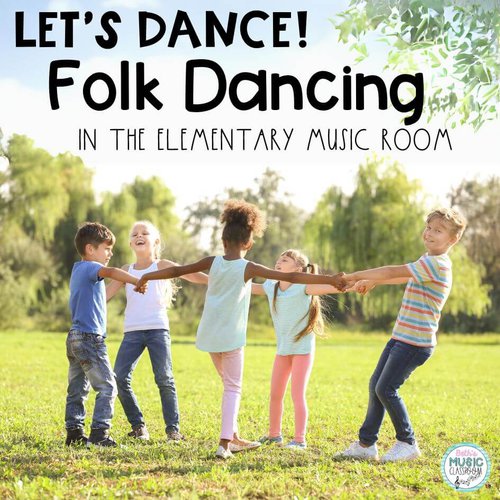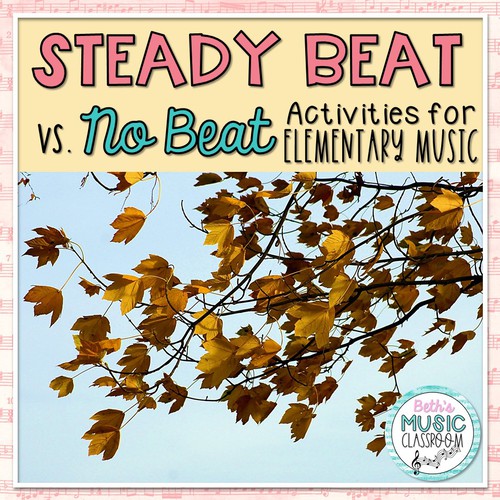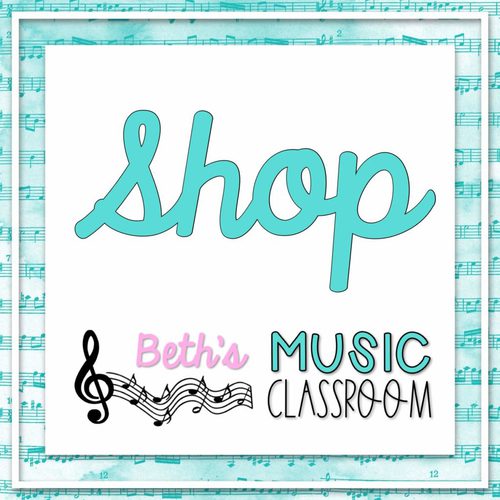
Preparation Strategies that will Transform Your Lessons
Welcome and thanks for being here! If you haven’t read part 1 of this rhythm series, you can find it here. It’s all about the benefits of teaching rhythm and the 3 P’s of the Kodaly method. Today, we’re jumping into specific rhythmic preparation activities. My hope is that you can use these with your kindergarten rhythm lessons as a solid foundation for your students.
Beginning Kindergarten Rhythm Lessons
Every year in the first few months of school, I love using pre-reading activities, especially with kindergarten and 1st grade. I use them a lot of different ways because I’m trying to include visual, aural, and kinesthetic activities so I can help all of the different learners in my classroom. I lead them through speaking patterns while they’re patting the beat. For example, the first or second week of school, I use the words “book” and “pencil.” Sometimes I just speak it, other times I use props of 1 book and 2 pencils, and most often with visuals on my smart board. In the school year, I use this same type of activity, but with different holidays or seasons. Remember – repetition is key. They will not be ready for that present moment if they haven’t done it many times and in many different ways.
I speak the pattern, and have students echo me: “book-book-pencil-book.” I explain that I used two different things – book and pencil. Also, I want students to grasp that “book” has one sound and that “pencil” has 2 sounds (and that there’s 2 pencils). Later I may ask, “Can anyone think of a new pattern that we could make with those two things?” Depending on your students’ ability, use this aurally or add the visual element by showing it on the board. If a student creates their own pattern to fill the 4 boxes, I drag and drop the correct icons to each box. Then the class reads it together. By the way, they’re composing!

We haven’t talked about rhythm or syllables yet. But we’re just recognizing that there are four or eight boxes up there and that we’re using two pencils and one book to create patterns.
Next, we speak each new pattern (student composed or not) while patting the steady beat and later while clapping the way the words go. I think having them try both ways is important. I tell them whether to pat the beat or “put the words in your hands.” Some will get both ways a little quicker, and others will need more practice.
Throughout the year, I use similar pre-reading activities for lots of holidays and activities: autumn, pirates, candy, Halloween, Thanksgiving, Christmas, snow, spring, Easter, etc. Even with up to 2nd grade, they may need to use these simple activities as a review at the beginning of the year. Plus, you can also use them to teach quarter rest, half note, and syncopated rhythms as well.
Rhythmic Preparation Activities
Let’s look at some more specific preparation activities that you can try with your students.
During September and apple season, I use these iconic notation patterns during my kindergarten rhythm introduction. They can also be used with 1st and 2nd, especially as a review. They read each pattern, and then we transition to the song “Apple Tree.” After I teach the melody or just the lyrics as a chant, I add a simple iconic rhythm from the previous activity. Students look at it and try playing it on rhythm sticks or another instrument. Next, I split the class into two groups, with one singing the song “Apple Tree” and the other performing a pattern: “apple-tree-apple-tree” while the song is being sung. You can also add a simple bordun. If this seems like a lot, it can always be broken down into multiple lessons.

Movement Activities
Another activity and one that will give students a break adds movement to pre-reading rhythms. For example, I use “tiptoe” as two eighth notes and “stomp” or “clap” as a quarter note. When listening to a composer piece (like “Surprise Symphony” or “In the Hall of the Mountain King”), practice the rhythm using the body percussion, and have students perform it to the piece. You can try out other 1- and 2-syllable movement words too. My students like “wiggle-freeze” and “shuffle-slide.”
Real-Life Activities
You can also practice different voices, like “whisper” for 2 8th notes. Use “speak,” “sing,” or “call” for a quarter note. Encourage students to try using the voice to perform each one.
Incorporate some other real-life activities – brushing your teeth, combing your hair, eating your lunch, etc. Just discuss how many sounds each action has and what they should be doing for it. My students love the windshield wipers theme. Say “windshield” with moving back and forth and “rain” while patting on legs (like the rain is coming down). A big one during Covid was washing your hands: “soap” – hand out for a squirt of soap; “washing” – rubbing hands together. (“soap-soap-washing-washing”)
There’s so many creative ways to use simple pre-rhythm activities, and it’s not limited to just quarter and 8th notes or to kindergarten and 1st grade.
Rhythm Lessons for Older Grades
Each January or February, I use an ice skating themed lesson to prepare half notes. The word “glide___” helps students understand that it is one sound stretched over two beats. My students get up and actually feel the rhythm, sliding their feet on the tile floor. Then they also visually read the iconic notation – “ice-skating-glide—” for “ta ti-ti ta-a.” They have never seen the half note, but they’re experiencing it in a way that is real to them – sliding on the ice.
Also, you can teach sixteenth notes and triplets using fruit: “strawberry” for triplets, “watermelon” for 4 sixteenth notes, “raspberry” for ti-tika/ti-tiri, and “cantaloupe” for tika-ti/tiri-ti. Make it more exciting by bringing in real fruit to show the patterns or print out fruit flashcards for students to compose their own fruit rhythms.
Pre-Reading Activities for Young Children
Now back to the littles, with preschool and kindergarten students, you can use shapes or colors. They’re learning those in their preschool class or at home and will enjoy showing off a bit. Now they may need a little bit more time to process this and echo it. But they can definitely do it. As you point to the pattern, say “circle-square-circle-square.” You can also have them say “yellow-blue-yellow-blue.”

Conclusion
In conclusion, in the preparation stage, don’t forget to think outside of the box a bit. When planning your kindergarten rhythm activities, consider seasonal words or items, action words for movements, real life activities, shapes, colors, and even names of your students. Remember, it is important to have lots of repetition, whether it’s prepping for quarter note, eighth notes, half note, or any rhythm. You also want your students to experience it in many different ways – feeling, moving, clapping, speaking, and playing the new rhythms.
Well, thanks for joining me on part 2 of this 3-part series on teaching rhythm. If you’d like to see the music activities that I use to teach kindergarten rhythm, find more info here: Pre-Reading Rhythms for Elementary Music Class. I hope you’ll join me again next week for the conclusion of this teaching rhythm series, all about strategies for practicing rhythm in your music classroom.
Have questions or just want to message me? Leave a comment below, email me (beth@bethsmusicclassroom.com), or send me a DM on Instagram @bethsmusicclassroom.


Here’s some other posts you may like.




